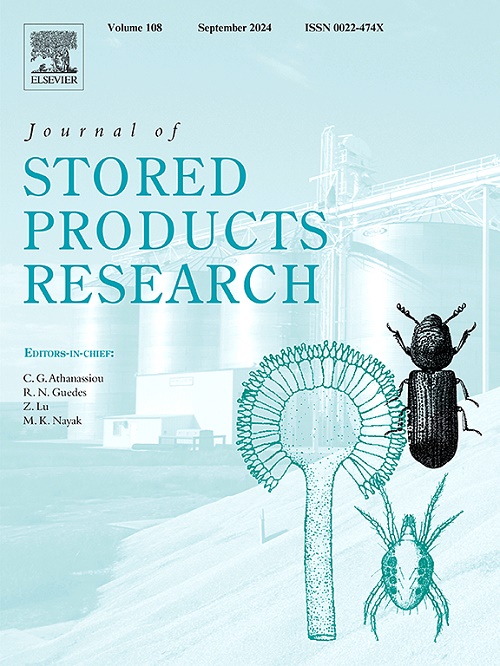Determining optimal stock of grain for national food security in Malawi: A two objective grain sizing dynamic optimization approach
IF 2.7
2区 农林科学
Q1 ENTOMOLOGY
引用次数: 0
Abstract
Food insecurity remains an issue of great concern in Malawi. As such, the Government of Malawi through the National Food Reserve Agency (NFRA) and the Agricultural Development and Marketing Corporation (ADMARC) introduced the Strategic Grain Reserve (SGR) in 1979 to be able to store grain that can be used in responding to vulnerable households, during food shortages amidst climate change concerns. However, past estimations of how much grain the SGR is supposed to hold employed static models that did not consider the dynamic nature of food requirements presented by climate change and volatile food prices, let alone the duo objectives of achieving food security whilst minimizing storage costs. Through understanding the dynamic and evolving goals of the country, the current study employed dynamic optimization algorithms using GEKKO and Numpy libraries in Python. In terms of how much grain the SGR is supposed to hold, the study found that the optimal stocks to be held for 3 months with another 3 months lead time to mobilize grains under public-private-partnership capacity is 316,350 MT to effectively offset any historical shortfalls in supply, 674,178 MT for the emergency reserve and 191,267.9 MT as buffer stocks. Nonetheless, the country's physical storage space is not adequate and too costly to hold such a quantity of grain. The study therefore advises using futures contracts and virtual stock programs, such as grain banks, to ensure a swift and effective response in emergencies.
确定马拉维国家粮食安全的最佳粮食库存:一种双目标粮食分级动态优化方法
粮食不安全仍然是马拉维极为关切的问题。因此,马拉维政府通过国家粮食储备局(NFRA)和农业发展和营销公司(ADMARC)于1979年推出了战略粮食储备(SGR),以便能够储存粮食,用于应对气候变化带来的粮食短缺。然而,过去对SGR应该拥有多少粮食的估计采用了静态模型,没有考虑气候变化和粮食价格波动所带来的粮食需求的动态性质,更不用说实现粮食安全同时最小化储存成本的双重目标了。通过了解国家的动态和不断变化的目标,本研究采用了使用Python中的GEKKO和Numpy库的动态优化算法。就SGR应该持有多少粮食而言,研究发现,在公私合作能力下,持有3个月的最佳库存,再加上3个月的提前时间来调动粮食,为316,350吨,有效抵消任何历史供应短缺,674,178吨为紧急储备,191,267.9吨为缓冲库存。尽管如此,该国的实际储存空间并不足够,而且对于储存如此数量的粮食来说成本太高。因此,该研究建议使用期货合约和虚拟库存程序,如粮食银行,以确保在紧急情况下迅速有效地作出反应。
本文章由计算机程序翻译,如有差异,请以英文原文为准。
求助全文
约1分钟内获得全文
求助全文
来源期刊
CiteScore
5.70
自引率
18.50%
发文量
112
审稿时长
45 days
期刊介绍:
The Journal of Stored Products Research provides an international medium for the publication of both reviews and original results from laboratory and field studies on the preservation and safety of stored products, notably food stocks, covering storage-related problems from the producer through the supply chain to the consumer. Stored products are characterised by having relatively low moisture content and include raw and semi-processed foods, animal feedstuffs, and a range of other durable items, including materials such as clothing or museum artefacts.

 求助内容:
求助内容: 应助结果提醒方式:
应助结果提醒方式:


